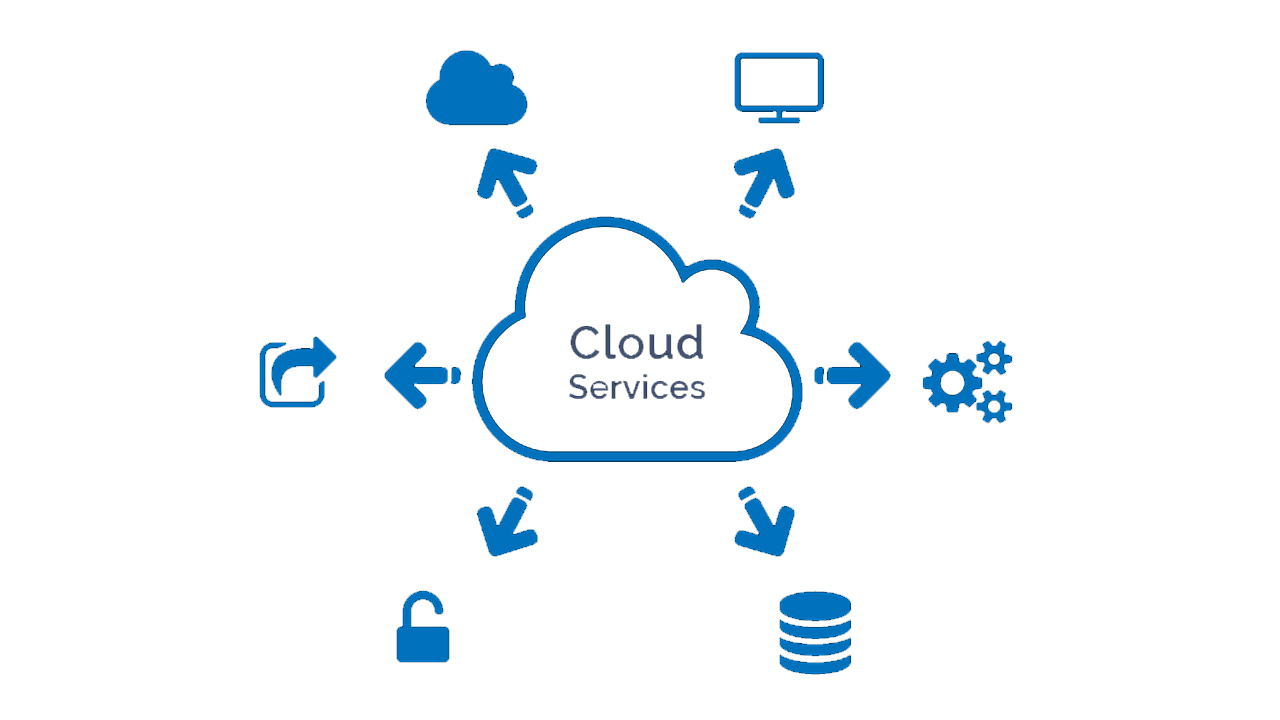Cloud services have revolutionized the way businesses and individuals interact with technology, enabling scalable, flexible, and cost-effective access to computing resources. From startups to large enterprises, the shift to cloud computing has become a fundamental aspect of digital transformation strategies, driving innovation, improving efficiency, and reducing operational costs.
This article explores the different types of cloud services, their benefits, challenges, and how they are shaping the future of technology.
What Are Cloud Services?
Cloud services refer to a wide range of services delivered over the internet, providing on-demand access to computing resources such as servers, storage, databases, networking, software, analytics, and intelligence. These services are typically offered by cloud service providers like Amazon Web Services (AWS), Microsoft Azure, Google Cloud Platform (GCP), IBM Cloud, and others.
Cloud services are categorized into different models based on the type of service and deployment:
Types of Cloud Service Models
- Infrastructure as a Service (IaaS):
- Description: IaaS provides virtualized computing resources over the internet. This includes virtual machines, storage, and networking, allowing businesses to rent infrastructure without having to invest in physical hardware.
- Examples: AWS EC2, Microsoft Azure Virtual Machines, Google Compute Engine.
- Benefits: High scalability, pay-as-you-go pricing, reduced capital expenditure, and the ability to scale resources up or down based on demand.
- Platform as a Service (PaaS):
- Description: PaaS offers a platform allowing developers to build, test, and deploy applications without managing the underlying infrastructure. It provides pre-configured environments with operating systems, databases, and development tools.
- Examples: AWS Elastic Beanstalk, Google App Engine, Microsoft Azure App Service.
- Benefits: Simplifies the development process, reduces time to market, supports collaboration, and eliminates the need for managing servers and infrastructure.
- Software as a Service (SaaS):
- Description: SaaS delivers software applications over the internet on a subscription basis. Users can access applications via a web browser, without the need to install or maintain software locally.
- Examples: Microsoft 365, Salesforce, Google Workspace.
- Benefits: Easy access to applications, automatic updates, lower upfront costs, and scalability based on user needs.
- Function as a Service (FaaS) / Serverless Computing:
- Description: FaaS, or serverless computing, allows developers to run code in response to events without managing servers. It provides a highly scalable and cost-efficient way to execute code.
- Examples: AWS Lambda, Azure Functions, Google Cloud Functions.
- Benefits: Simplified code deployment, automatic scaling, and reduced costs since you only pay for the compute time used.
Types of Cloud Deployment Models
- Public Cloud:
- Description: Public clouds are operated by third-party providers who deliver services to multiple customers over the internet. Resources are shared among all users, but data remains isolated and secure.
- Examples: AWS, Azure, Google Cloud.
- Benefits: Cost-effective, highly scalable, and easy to set up with minimal management required by the user.
- Private Cloud:
- Description: A private cloud is dedicated to a single organization, offering greater control and security. It can be hosted on-premises or by a third-party provider.
- Examples: VMware, OpenStack.
- Benefits: Enhanced security, greater control, compliance with regulatory requirements, and customization options.
- Hybrid Cloud:
- Description: A hybrid cloud combines public and private clouds, allowing data and applications to be shared between them. This model provides flexibility and optimizes existing infrastructure, security, and compliance.
- Benefits: Flexibility, optimized costs, and the ability to use the right environment for specific workloads.
- Multi-Cloud:
- Description: Multi-cloud refers to the use of multiple cloud services from different providers. It helps avoid vendor lock-in and allows organizations to choose the best services from different providers.
- Benefits: Reduces dependence on a single provider, increases resilience, and allows the use of best-in-class services across providers.
Benefits of Cloud Services
- Cost Efficiency: Cloud services reduce the need for significant upfront capital investment in hardware and software. The pay-as-you-go model allows businesses to only pay for the resources they use, reducing operational costs.
- Scalability and Flexibility: Cloud services provide the ability to scale resources up or down based on demand. This flexibility ensures that businesses can handle varying workloads efficiently and without delays.
- Improved Collaboration and Accessibility: Cloud services enable access to applications and data from anywhere with an internet connection, facilitating remote work and collaboration among teams spread across different locations.
- Automatic Updates and Maintenance: Cloud providers handle the maintenance, updates, and security of the infrastructure, allowing businesses to focus on their core activities without worrying about managing IT resources.
- Disaster Recovery and Business Continuity: Cloud services offer robust backup and disaster recovery solutions, ensuring that data is protected and can be restored quickly in the event of a failure or disaster.
- Enhanced Security: Leading cloud providers invest heavily in advanced security measures, including data encryption, access control, and threat detection, to protect customer data and applications from cyber threats.
- Innovation and Agility: Cloud services provide access to cutting-edge technologies such as AI, machine learning, big data analytics, and IoT, enabling businesses to innovate and bring new products and services to market faster.
Challenges of Cloud Services
- Security and Privacy Concerns: While cloud providers offer robust security, data stored in the cloud can still be vulnerable to breaches and unauthorized access. Organizations must ensure compliance with data protection regulations and implement strong security practices.
- Downtime and Service Reliability: Cloud services can experience outages, which can impact business operations. It’s essential to choose providers with strong service level agreements (SLAs) and redundancy measures in place.
- Vendor Lock-In: Relying heavily on a single cloud provider can lead to vendor lock-in, making it difficult to switch providers or move workloads without significant effort and cost.
- Data Transfer and Bandwidth Costs: Moving large volumes of data to and from the cloud can incur significant costs, and bandwidth limitations can affect the performance of cloud services.
- Complexity in Management: Managing multiple cloud environments, especially in hybrid or multi-cloud setups, can be complex and require specialized skills and tools for effective monitoring and management.
Best Practices for Adopting Cloud Services
- Assess Business Needs and Objectives: Clearly define your business goals and identify how cloud services can help achieve them. Conduct a thorough assessment of your current IT infrastructure, applications, and workloads to determine the best cloud strategy.
- Choose the Right Cloud Model and Provider: Select the cloud service model (IaaS, PaaS, SaaS) and deployment model (public, private, hybrid, multi-cloud) that best fit your business needs. Evaluate providers based on factors like performance, security, cost, and support.
- Ensure Security and Compliance: Implement strong security practices, including encryption, access control, and regular security audits. Ensure that your cloud provider complies with relevant industry standards and regulations.
- Plan for Data Migration and Integration: Develop a detailed migration plan that includes data transfer, application compatibility, and integration with existing systems. Test thoroughly before moving critical workloads to the cloud.
- Optimize Costs: Monitor cloud usage and costs regularly to avoid unexpected expenses. Use cloud cost management tools to optimize resource allocation and take advantage of pricing models like reserved instances or spot instances to save money.
- Focus on Performance Monitoring and Management: Use cloud management and monitoring tools to gain visibility into your cloud environment, track performance metrics, and address issues promptly to maintain optimal performance.
- Invest in Training and Skill Development: Equip your IT team with the necessary skills and knowledge to manage and optimize cloud services. Continuous learning and certifications in cloud technologies are essential for maximizing the benefits of cloud adoption.
Conclusion
Cloud services have become an integral part of modern business strategies, providing the flexibility, scalability, and innovation needed to thrive in a competitive digital landscape. By leveraging the right mix of cloud models and services, organizations can drive efficiency, reduce costs, and accelerate their digital transformation journeys.
However, successful cloud adoption requires careful planning, a focus on security and compliance, and ongoing management to fully realize the benefits of the cloud. As technology continues to evolve, cloud services will undoubtedly remain at the forefront of business innovation and growth.



